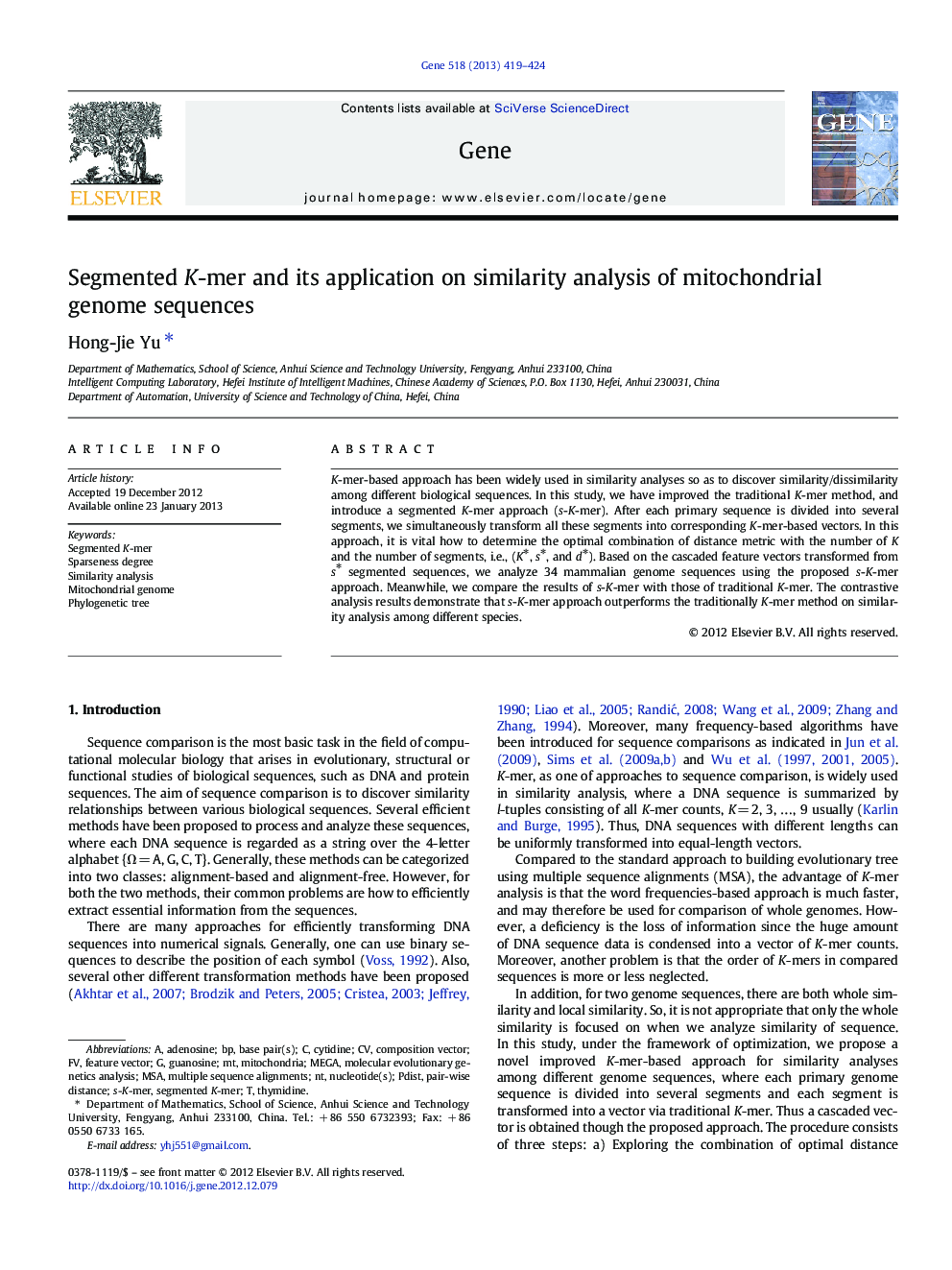| Article ID | Journal | Published Year | Pages | File Type |
|---|---|---|---|---|
| 2817388 | Gene | 2013 | 6 Pages |
K-mer-based approach has been widely used in similarity analyses so as to discover similarity/dissimilarity among different biological sequences. In this study, we have improved the traditional K-mer method, and introduce a segmented K-mer approach (s-K-mer). After each primary sequence is divided into several segments, we simultaneously transform all these segments into corresponding K-mer-based vectors. In this approach, it is vital how to determine the optimal combination of distance metric with the number of K and the number of segments, i.e., (K⁎, s⁎, and d⁎). Based on the cascaded feature vectors transformed from s⁎ segmented sequences, we analyze 34 mammalian genome sequences using the proposed s-K-mer approach. Meanwhile, we compare the results of s-K-mer with those of traditional K-mer. The contrastive analysis results demonstrate that s-K-mer approach outperforms the traditionally K-mer method on similarity analysis among different species.
Graphical abstractFigure optionsDownload full-size imageDownload high-quality image (263 K)Download as PowerPoint slideHighlights► Transform each genome sequence into a K-mer-based vector (F). ► Optimize upon all the vectors F to obtain the optimal K* for similarity analysis. ► Propose an optimizing model, i.e. segmented K-mer, to improve the performance. ► Results demonstrate the validity of our approach (s-K-mer).
